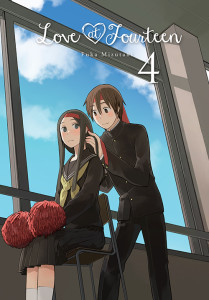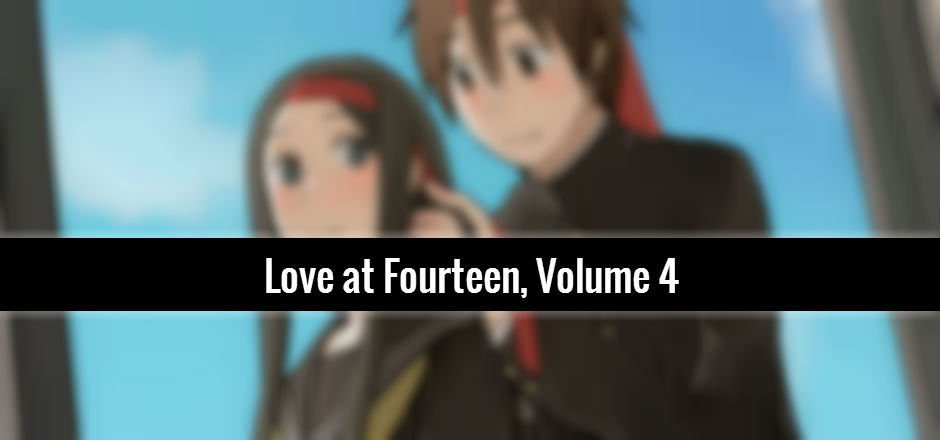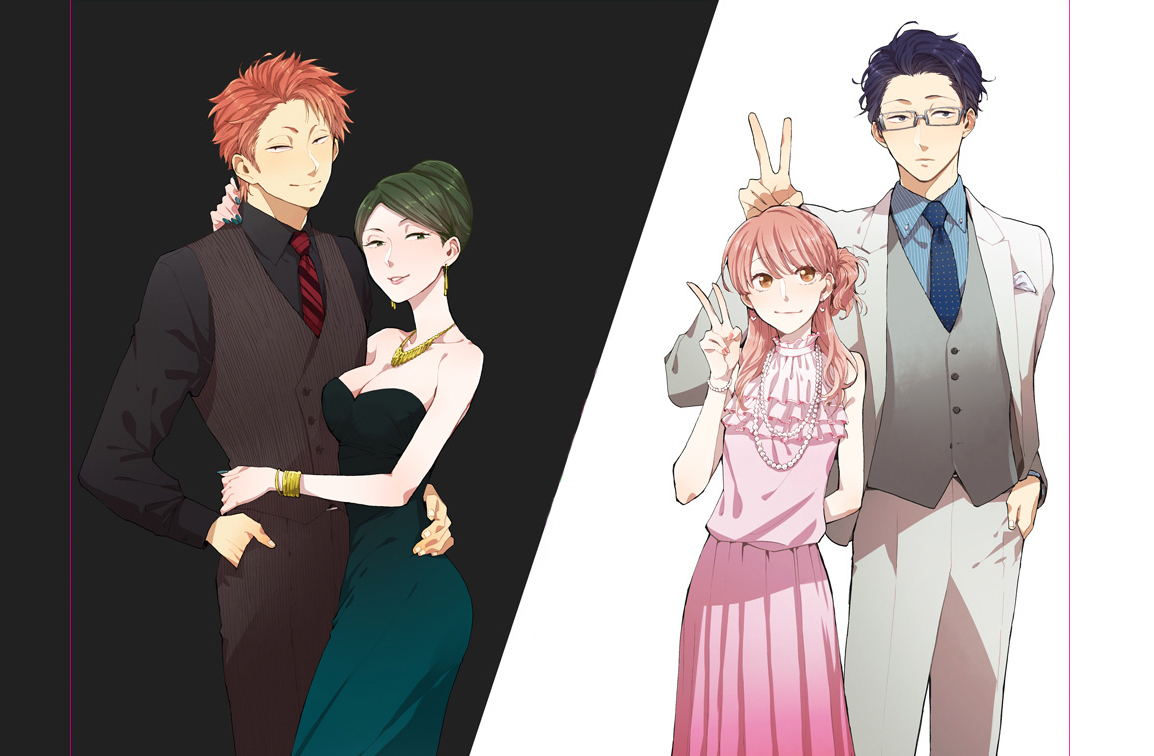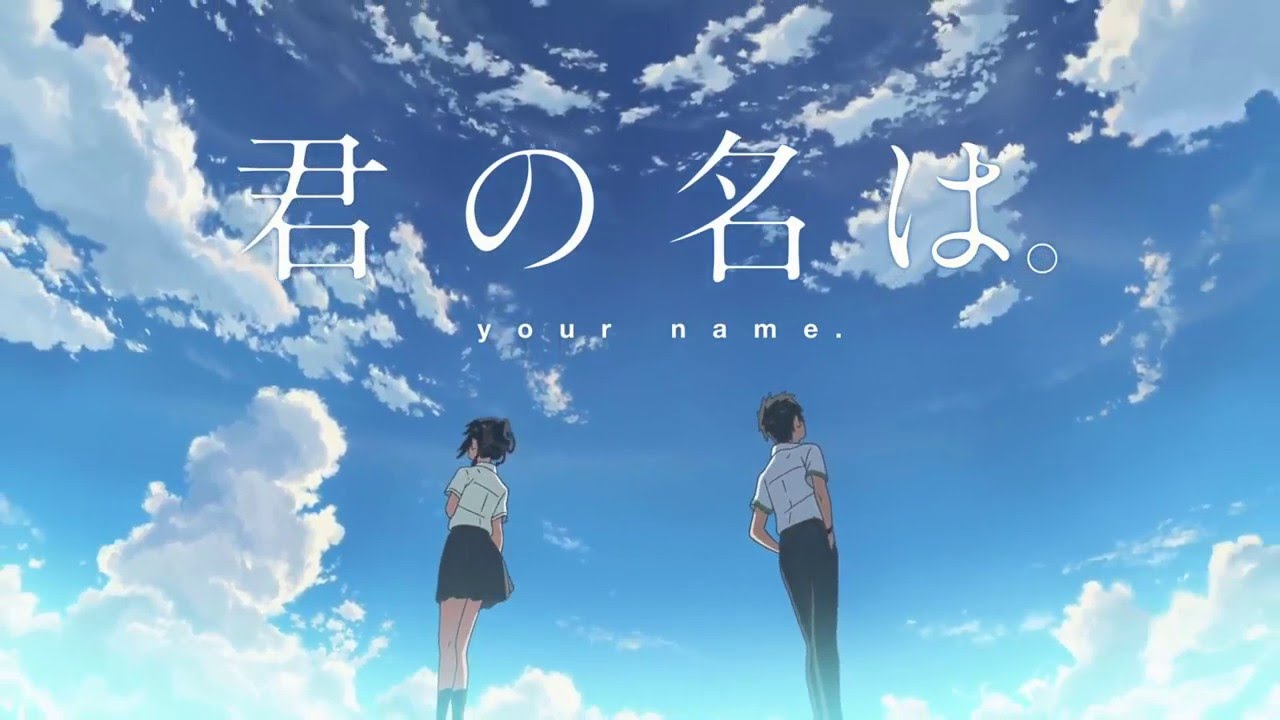Kanata Tanaka and Kazuki Yoshikawa are very grown-up for middle schoolers. Between Kanata’s womanly grace and Kazuki’s sophisticated manliness, the rest of Class 2-B is awed – and a little intimidated – by their maturity, seriousness, and good grades.
But Kanata and Kazuki really don’t feel mature at all, and they meet secretly to goof off and blow off steam – but during their second year of middle school, their friendship starts to change into something else entirely.
 Love at Fourteen is a story about the joys and pains of first love. While focusing on Kanata and Kazuki’s sweet yet rocky start, four other students feature prominently: Tatsumi, a delinquent-like boy who’s developing feelings for the choir teacher; Aoi, a girl who has an unrequited love for Kanata; Ryosuke, a third-year who’s also in love with the choir teacher and watches her from afar; and Mayu, his classmate, who watches him from his side.
Love at Fourteen is a story about the joys and pains of first love. While focusing on Kanata and Kazuki’s sweet yet rocky start, four other students feature prominently: Tatsumi, a delinquent-like boy who’s developing feelings for the choir teacher; Aoi, a girl who has an unrequited love for Kanata; Ryosuke, a third-year who’s also in love with the choir teacher and watches her from afar; and Mayu, his classmate, who watches him from his side.
Volume 4 focuses on new events in Kanata and Kazuki’s relationship: the transition from summer to winter uniforms and Kazuki’s selection for the athletic festival committee, which takes up so much of his time that he has difficulty meeting with Kanata after school in their “spot” (the science room). And while Ryosuke and Mayu were introduced in an earlier volume, the story of their something-like-a-romance is more fully explained.
This series is a beautiful tribute to the innocence and purity of first love. Kanata and Kazuki’s interactions remind me of ones I had with my own first love – and with ten years between me and the fourteen-year-old girl experiencing her first romance, the reminder feels a little bittersweet, but exists in a frothy, rose-colored haze.
 With that said, I find the series both charming and heartwarming, and the plot of Volume 4 fits perfectly with that tone as a whole. Kazuki’s absence from Kanata’s life leaves her feeling neglected, while Aoi – one of the only people who knows about Kanata and Kazuki – finds her own way to feel closeness with the girl she has a crush on in a way Kazuki can’t mimic.
With that said, I find the series both charming and heartwarming, and the plot of Volume 4 fits perfectly with that tone as a whole. Kazuki’s absence from Kanata’s life leaves her feeling neglected, while Aoi – one of the only people who knows about Kanata and Kazuki – finds her own way to feel closeness with the girl she has a crush on in a way Kazuki can’t mimic.
One of my only real critiques of this series is the art, which I find incredibly unremarkable. Unlike other manga, in which art is truly a focal point, the style of Love at Fourteen exists only to be the least possible distraction, serving to move the story ahead and occasionally providing comic relief.
That said, though, there’s nothing unlikable or unpleasant about the art style, just a lack of exceptionalism, and it definitely makes reading this manga a pleasant experience.
Love at Fourteen is one of the best slice-of-life manga I’ve read in recent years, and it’s by far the most under-rated. It lacks the exaggeration and many of the exhausted tropes of the average shojo romance, and it’s a perfect manga to suggest for non-manga readers of contemporary YA romance as an introduction to the genre.
Story: 5 out of 5 stars
Art: 3 out of 5 stars
Overall: 4 out of 5 stars
—
Feliza Casano edits and writes for all sections of the site. In her approximate 2.3 hours of free time each month, she loves watching anime, reading science fiction, and working on her novels-in-progress. Keep up with her antics at felizacasano.com and follow her on Twitter @FelizaCasano.





